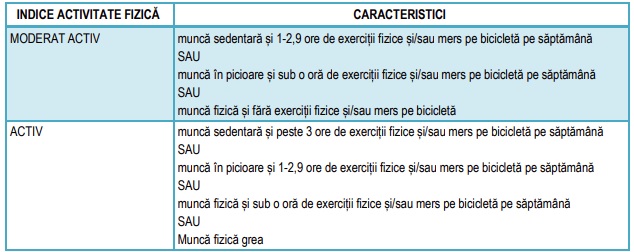
How much physical exercise and how much sport should you do to maintain your health? It’s good to know that the answer varies depending on your age and how active or sedentary you are on a daily basis. The National Institute of Public Health’s guide “Healthy lifestyles and other priority measures for the prevention of non-communicable diseases in primary care” gives you the right answer by age category – children under 5 years, adolescents and healthy adults over the age of 18 – but also for patients with cardiovascular disease, pregnant or pregnant.
According to National Institute of Public Health guidelines, family physicians should provide age- and health-appropriate recommendations for physical activity levels and recommend avoiding a sedentary lifestyle.
The message that any physical activity is better than no physical activity is important. People who do not engage in regular physical activity can be encouraged to start and gradually increase their activity level to the recommended level.
- Children up to 5 years old
For the healthy development of children, it is recommended to encourage physical activity, especially supervised play on the floor in a safe environment.
It is recommended to encourage children aged 1-3 years and preschoolers aged 3-5 years to exercise for at least 3 hours every day during the day.
According to the Canadian Early Childhood Physical Activity Guidelines, there is low- to moderate-quality evidence that increased levels of physical activity are positively associated with adiposity, motor skill development, or cognitive development in infants.

Child in the park / Photo: Jeffrey Groeneweg / AFP / Profimedia
In young children, there is moderate-quality evidence that increased levels of physical activity are positively associated with bone and skeletal health. In preschool children, there is evidence of an association between increased physical activity and improvements in adiposity, motor development, psychosocial health, and cardiometabolic outcomes.
In summary, the authors of the cited manual appreciate that the analyzed studies show that a higher level of physical activity was associated with better indicators of the level of obesity, the development of cognitive and motor skills, psychosocial health and cardio-metabolic health. in the first years of life.
The identified studies do not provide specific information about the level of physical activity necessary for full health in this age group.
- Children and teenagers – 5-12 years and 13-17 years
It is recommended to encourage moderate to vigorous physical activity in children and young people aged 5 to 17 years.
Available data for the 5-17 age group support the conclusion that physical activity provides fundamental health benefits. There is a large body of observational and experimental research that demonstrates the relationship between physical activity, cardiorespiratory fitness and muscular endurance, reduced body fat, reduced risk of cardiovascular and metabolic diseases, improved bone health, and reduced symptoms of depression.
These studies also support the hypothesis that vigorous and sustained physical activity, beginning in childhood and continuing into adulthood, maintains a favorable risk profile and reduces morbidity and mortality from cardiovascular disease and diabetes.
Moderate to vigorous physical activity of at least 60 minutes a day helps children and young people reduce cardiorespiratory and metabolic risk. More intense or longer exercise seems to have a greater benefit, but research on this is limited.

Racetrack / Photo: Kittiphan Teerawatanakul | Dreamstime.com
To increase muscle resistance, unstructured activities such as playing in designated areas, climbing trees, pushing and pulling are recommended 2-3 times a week.
Physically active children and young people tend to have lower obesity rates than those who are sedentary. In people with obesity and overweight, interventions that increase the level of physical activity tend to have a beneficial effect on health.
Physical activity increases the mineral content of bone tissue and the density of bone tissue; measures that strengthen the musculoskeletal system are effective if they are performed at least 3 times a week. It can be part of the game, running or jumping, lifting weights.
A global assessment of the evidence suggests that important health benefits can be expected for children and young people who accumulate 60 minutes of moderate to vigorous physical activity per day.
The concept of accumulation refers to the fact that sessions of physical activity lasting less than 60 minutes during the day can accumulate. Certain types of physical activity must be performed at least 3 times a week:
• strength exercises that increase muscle strength of large muscle groups of the body and limbs;
• intensive aerobic exercises that improve cardiorespiratory fitness, cardiovascular and metabolic risk factors;
• lifting weights for bone health
- Healthy adults – over 18 years old
Healthy adults of all ages should do 2.5 to 5 hours per week of physical activity or aerobic exercise of at least moderate intensity or 1 to 2.5 hours per week of vigorous physical activity. Sedentary people should be strongly encouraged to begin a program of light exercise.
Physical activity or aerobic exercise should be performed in several sets of at least 10 minutes, evenly distributed throughout the week, for example, 4-5 days per week.

Muscle-strengthening activities are recommended at least 2 days a week.
There is a direct relationship between physical activity and cardiorespiratory health, which is estimated to reduce the risk of cardiovascular disease, stroke and hypertension.
Improvement of cardiorespiratory physical condition is proportional to the intensity, frequency and duration of physical efforts; A reduction in cardiovascular risk usually occurs with 150 minutes (at least) of moderate physical activity per week.

Research shows that 150 minutes of moderate to vigorous physical activity per week also significantly reduces the risk of diabetes and metabolic syndrome.
Physical activity also helps maintain weight; 150 minutes of aerobic exercise per week was associated with a 1-3% weight loss.
Physically active adults have a lower risk of hip or spine fracture because exercise minimizes bone loss and increases muscle mass and strength. Weightlifting and moderate-to-vigorous resistance exercise, performed 3-5 days per week for 30-60 minutes per session, are effective in increasing bone density.
30-60 minutes of moderate to vigorous exercise per day is also necessary to achieve a significant reduction in the risk of breast and colon cancer.

Overall, there is strong evidence that active adults have a lower overall mortality and risk of coronary heart disease, high blood pressure, stroke, metabolic syndrome, diabetes, colon and breast cancer, and depression. In addition, active people have better respiratory, cardiac, and muscle fitness, adequate weight, appropriate biomarkers for lower risk of cardiovascular disease, diabetes, and healthier bones.
As stated in the European Guidelines for the Prevention of Cardiovascular Diseases, current evidence shows that in healthy people, increasing the level of physical activity and cardiorespiratory fitness leads to a significant reduction in the risk of cardiovascular and all-cause mortality by 20-30%. , depending on the dose. Research shows that the risk of death continues to decrease with increasing levels of physical activity and cardiorespiratory fitness in both women and men from childhood to old age.
- Patients with cardiovascular diseases
Patients with a history of myocardial infarction, coronary artery bypass grafting, percutaneous transluminal coronary angioplasty, stable angina pectoris, or stable chronic heart failure should perform at least 30 minutes of moderate to vigorous physical activity 3 times per week.
Sedentary people should be strongly encouraged to start a light exercise program after appropriate risk stratification.

Pregnant woman / Photo: Subbotina | Dreamstime.com
- Pregnant women and pregnant women
Healthy pregnant and breastfeeding women who are not active or not used to vigorous exercise should get at least 150 minutes (2.5 hours) of moderate-intensity aerobic physical activity per week during pregnancy and breastfeeding. It is advisable to distribute physical activity during the week.
Pregnant and breastfeeding women who are used to vigorous aerobic physical activity or who are intensely active can continue to be physically active during pregnancy and breastfeeding as long as they remain healthy and discuss with their doctor how and when this activity should be adjusted over time.
Source: Hot News
Ashley Bailey is a talented author and journalist known for her writing on trending topics. Currently working at 247 news reel, she brings readers fresh perspectives on current issues. With her well-researched and thought-provoking articles, she captures the zeitgeist and stays ahead of the latest trends. Ashley’s writing is a must-read for anyone interested in staying up-to-date with the latest developments.